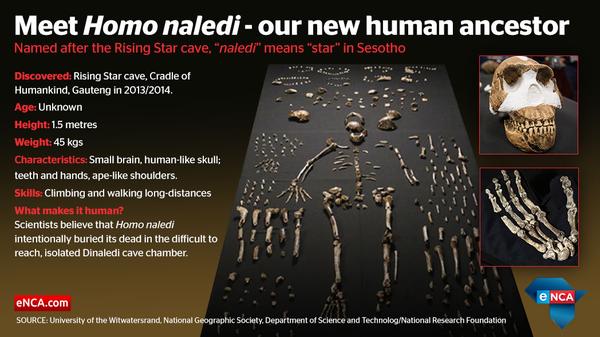
Scientists have discovered a new human-like species in a burial chamber deep in a cave system in South Africa. The discovery of 15 partial skeletons is the largest single discovery of its type in Africa.
About 1,500 fossils were found deep in a cave system outside Johannesburg, hidden in a deep underground chamber only accessible via several steep climbs and rock cavasses.
Homo naledi was named after the Rising Star cave – naledi means star in Sesotho, a South African language.

Initial Discovery
The initial discovery was made two years ago in the Dinaledi Chamber (Chamber of Stars) of the Rising Star cave by Witwatersrand University scientists and volunteer cavers. The cave is located near the Cradle of Humankind, a World Heritage Site in Gauteng province, South Africa.

Features of Homo naledi
- Small, modern-looking teeth
- Hands, wrists and feet of the bodies were similar to modern humans
- Upper body were much more like the earliest humans
- Had a tiny brain, about the size of an average orange
- Approximately 1.5 meters (about 5 feet) tall
- Weighed about 45 kg
- Unknown age, but researchers say it could be as old as 3 million years.
The researchers claim that the discovery will change ideas about our human ancestors and could shed fresh light on the origin of mankind.




